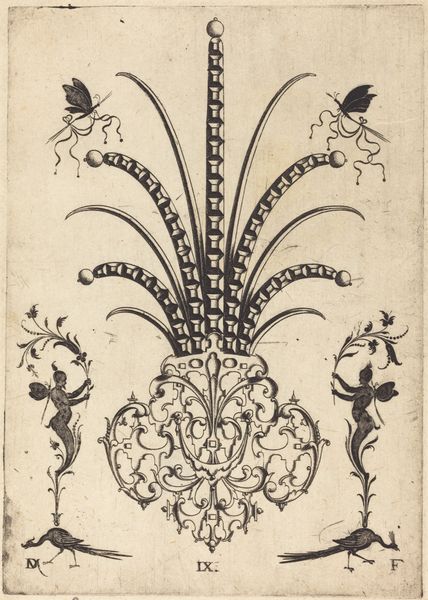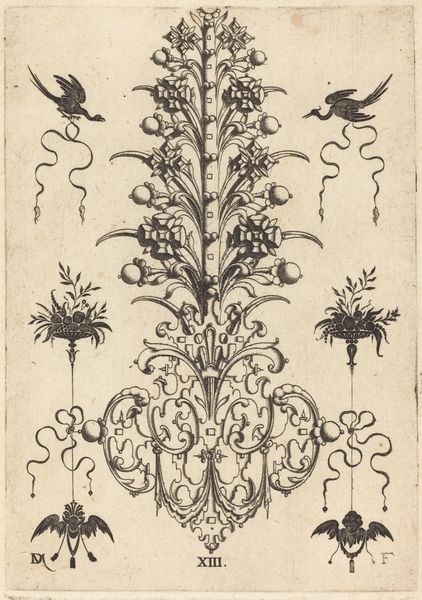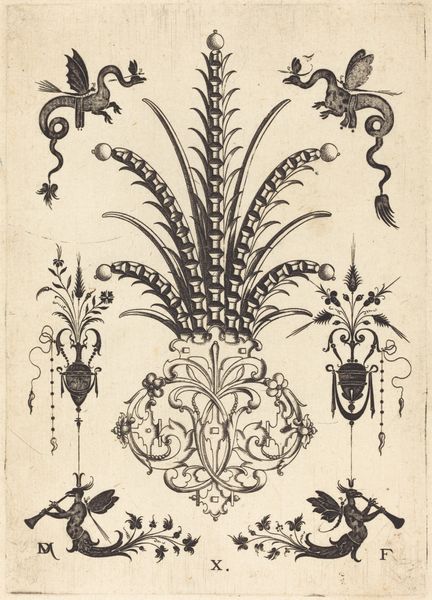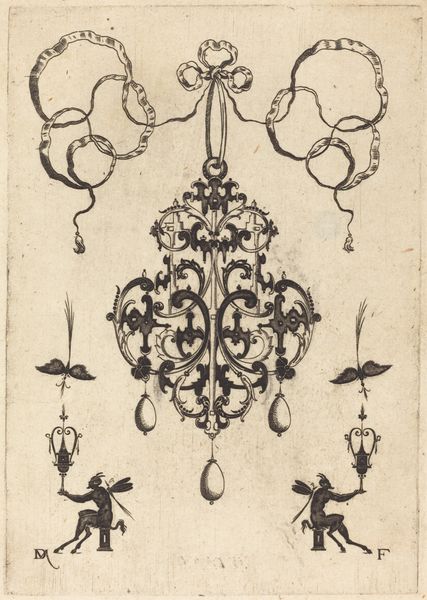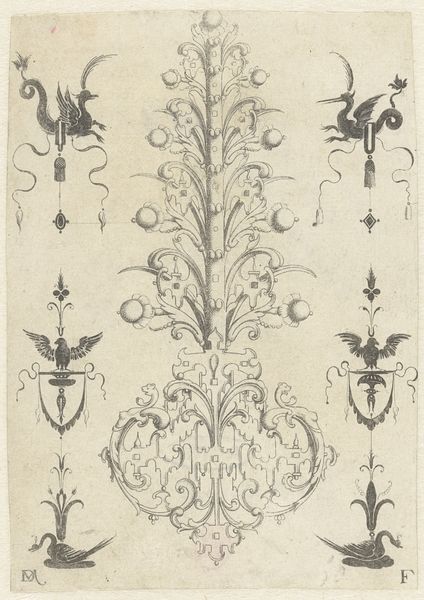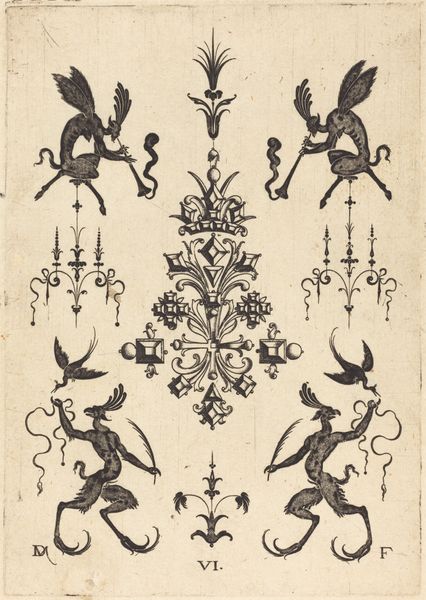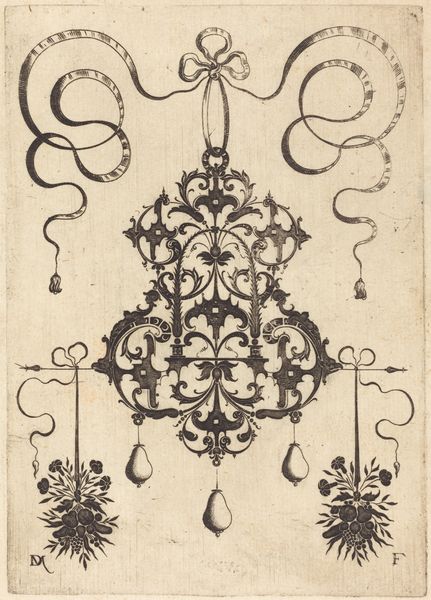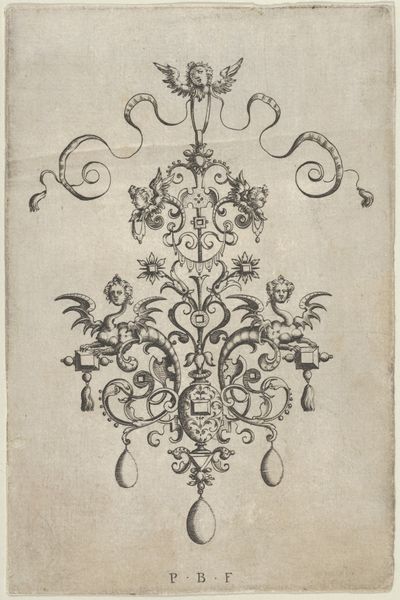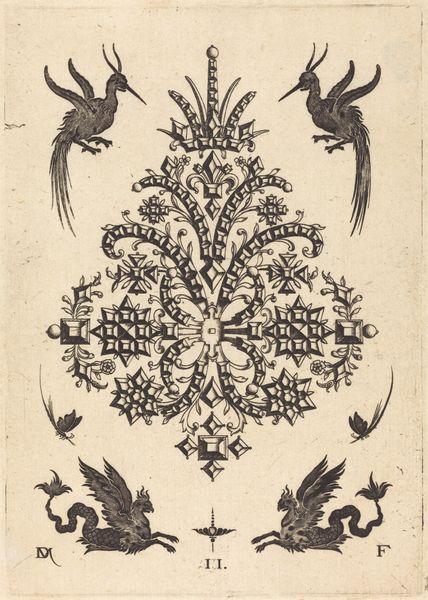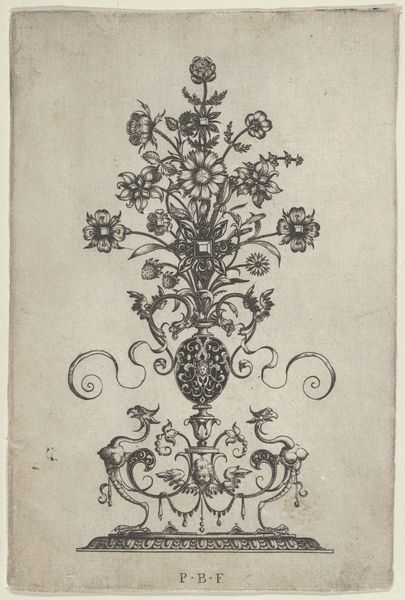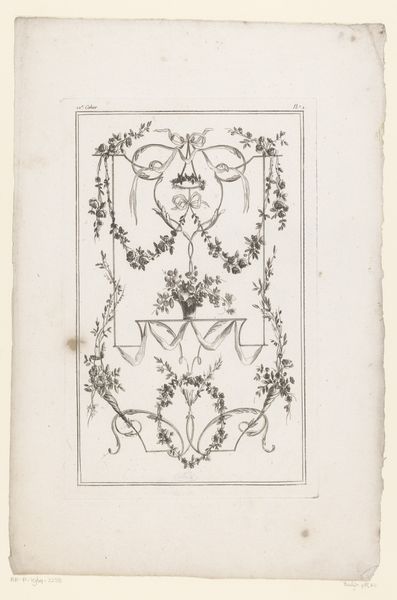
Brooch with Table-Stones, Winged Animals at Top, and Winged Human Beings at Bottom 1596
0:00
0:00
print, engraving
# print
#
figuration
#
11_renaissance
#
line
#
history-painting
#
decorative-art
#
engraving
Copyright: National Gallery of Art: CC0 1.0
Editor: This is Daniel Mignot's "Brooch with Table-Stones, Winged Animals at Top, and Winged Human Beings at Bottom," an engraving from 1596. It looks like something you’d find in an alchemist’s lab, with all these strange creatures! What do you make of this fantastical design? Curator: Fantastical is right! For me, this engraving is like a peek into the Renaissance mind, where the classical world was being re-imagined with a playful twist. It’s almost a heraldic crest, but instead of stoic lions, we get these wonderfully bizarre, almost cartoonish winged dragons up top. Have you noticed the detail in the central ornament, and how the winged human beings look like jewelry holders? It feels both meticulously crafted and strangely whimsical. Editor: Definitely, they almost feel more ornamental than human. Were brooches actually made with designs like these? Curator: Maybe not *exactly* like this; think of this more as a designer's idea book. Mignot’s print provided inspiration, almost a catalogue of ornamental motifs for goldsmiths and other artisans. Imagine scrolling Instagram for design inspo, but it's 1596 and your algorithm is an engraving. What feelings do you get from the symmetry and the repetition? Editor: It makes it feel really intentional, like a study. But seeing it as inspiration for jewelers shifts the perspective. Curator: Precisely! And doesn't it also reflect the late Renaissance fascination with the grotesque—embracing the bizarre and mixing the natural with the artificial? It’s a wild and wonderful world captured in ink. This one image reflects the history of ornamental artwork and printing techniques. Editor: So it's not just a pretty picture, but a snapshot of a whole design culture. Thanks for pointing that out. Curator: My pleasure! It’s these layers of meaning that really make art history sing, isn't it?
Comments
No comments
Be the first to comment and join the conversation on the ultimate creative platform.
